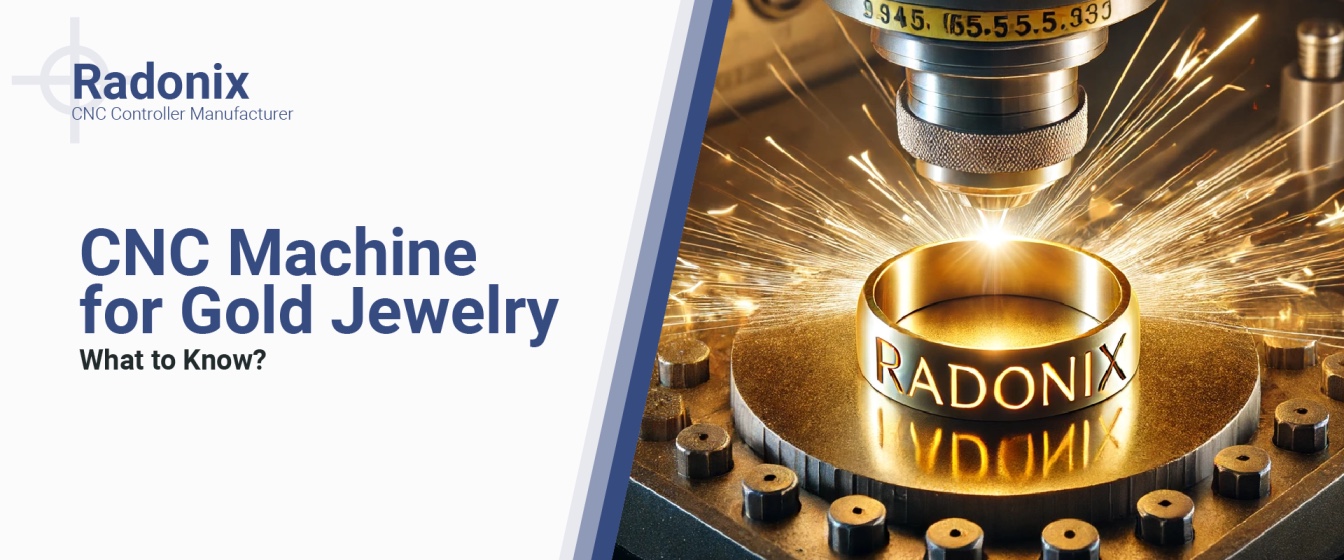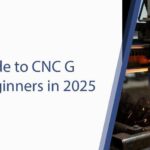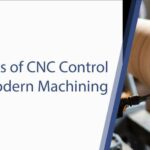CNC Technology in Modern Gold Jewelry Manufacturing
CNC Machine for Gold Jewelry: The art of jewelry making has always reflected human creativity and craftsmanship. Yet in today’s precision-driven era, CNC (Computer Numerical Control) technology has reshaped the foundation of gold jewelry manufacturing.
What once required hours of manual labor by skilled artisans can now be completed with remarkable accuracy, repeatability, and design freedom.
CNC machines bring digital precision to an ancient art form, enabling manufacturers and designers to achieve results that combine traditional beauty with modern efficiency.
This fusion allows for greater customization, reduced waste, and a flawless level of consistency that defines contemporary fine jewelry.
The Evolution of Jewelry Manufacturing
For centuries, jewelry design and production were entirely manual processes. Artisans relied on hand tools, chisels, and experience to shape intricate gold patterns. While this approach created one-of-a-kind masterpieces, it also limited scalability and precision.
The introduction of CNC machining transformed the jewelry sector by digitizing craftsmanship. Using 3D CAD models, jewelers can now translate complex designs into CNC programs that execute with perfect precision. The result is a seamless blend of artistry and automation.
How CNC Enhances the Process
- Design accuracy: Every curve, contour, and engraving is produced exactly as designed.
- Faster turnaround: CAD designs can move to prototype or production within hours.
- Minimal waste: Automated cutting paths optimize gold utilization and reduce loss.
- Consistency: Every piece replicates the original design perfectly, ensuring brand reliability.
CNC doesn’t replace artisans—it empowers them, freeing time for creative expression while maintaining absolute precision in production.
Key Benefits of CNC Machines in Gold Jewelry
1. Precision and Accuracy
CNC systems follow digital instructions with micrometer-level precision, ensuring every engraving, prong, and curve is executed flawlessly. The technology eliminates inconsistencies that often occur with manual craftsmanship, particularly in highly detailed patterns.
Example: Intricate filigree and lattice patterns, once impossible to replicate by hand at scale, can now be reproduced identically across hundreds of pieces without deviation.
2. Efficiency and Productivity
Unlike traditional manufacturing methods, CNC machines can run 24/7 with minimal supervision. This continuous operation dramatically increases productivity and reduces production lead time.
- Faster cycles: CNC programs automate repetitive operations.
- High output: Large batches of rings, pendants, and earrings can be produced simultaneously.
- Low downtime: Automated tool changers and adaptive control systems maintain performance across shifts.
3. Design Flexibility
Modern jewelry trends demand personalization and innovation. CNC machining supports limitless design freedom—from organic, nature-inspired shapes to complex geometric forms.
Designers can experiment quickly through CAD software, creating prototypes and variations that can be produced instantly. This flexibility also allows jewelry brands to respond rapidly to evolving customer preferences.
4. Cost-Effectiveness
While CNC systems require significant initial investment, long-term savings come from lower labor costs, reduced gold waste, and fewer production errors. Optimized tool paths ensure every cut and engraving uses material efficiently, maximizing return on investment.
5. Consistency and Quality Control
Uniformity is essential in gold jewelry manufacturing—especially for luxury brands. CNC systems ensure each item meets identical design specifications, maintaining consistency across large production runs.
Integrated sensors and precision feedback loops continuously monitor performance, guaranteeing every product meets quality benchmarks before leaving the workshop.
Applications in Gold Jewelry Manufacturing
Engraving and Cutting
CNC machines excel at precision engraving and fine cutting. Whether adding initials, custom textures, or detailed filigree work, CNC ensures impeccable depth control and edge clarity.
Use Cases:
- Creating personalized messages on pendants or bracelets.
- Producing intricate lattice or mesh designs for luxury collections.
- Engraving textures that simulate hand-finished craftsmanship.
Prototyping and Customization
With CNC, jewelers can move from concept to prototype in record time. Designers can visualize a digital 3D model, machine a prototype in wax or gold, and present it to clients for approval before full-scale production.
This approach reduces the risk of costly errors and ensures the final piece perfectly reflects customer expectations.
Mass Production
CNC systems deliver scalability without compromising detail. Thousands of identical gold charms, links, or ring settings can be produced consistently, ensuring seamless integration between artistic design and industrial output.
CNC vs. Laser Cut Jewelry: Understanding the Difference
Both CNC machining and laser cutting are popular in jewelry manufacturing, but their techniques serve different purposes.
| Feature | CNC Jewelry Manufacturing | Laser Cut Jewelry |
|---|---|---|
| Process | Uses rotating cutting tools to remove material (subtractive process). | Uses focused light beams to slice or engrave surfaces. |
| Material Compatibility | Ideal for gold, silver, platinum, and dense alloys. | Best for thin metals and delicate patterns. |
| Precision Level | Produces 3D sculptural and engraved details. | Delivers ultra-fine 2D outlines and patterns. |
| Applications | Sculpted rings, engraved bangles, textured surfaces. | Lightweight pendants, filigree panels, decorative outlines. |
In short, CNC excels in sculpting and depth, while laser cutting shines in detailing and outlines. Many modern workshops now combine both technologies for hybrid results.
Case Study: Radonix CNC in Gold Jewelry Production
Radonix has been instrumental in advancing CNC controller technology for the jewelry sector. In a recent project, a gold CNC machine equipped with a Radonix motion control system produced a highly detailed engraved gold plate featuring symmetrical patterns and smooth curves.
The controller managed real-time motion adjustments, vibration suppression, and precision synchronization across multiple axes. The outcome was a flawless finish—smooth edges, consistent depth, and zero tool chatter.
Highlights of the Case Study:
- Real-time stability and motion accuracy ensured perfect symmetry.
- Seamless toolpath execution minimized scrap and gold loss.
- Enhanced productivity allowed for continuous batch production without precision loss.
Radonix technology demonstrates how advanced control systems transform CNC machines into tools of creative mastery—bridging the gap between artistry and automation.
Conclusion: Merging Artistry and Automation
CNC machines have redefined gold jewelry craftsmanship, merging creativity with engineering precision. They enable designers to imagine freely, artisans to work efficiently, and manufacturers to deliver excellence at scale.
By embracing CNC technology, the jewelry industry achieves faster production, superior accuracy, and sustainable use of materials—all while maintaining the soul of craftsmanship.
At Radonix, with over 16 years of expertise in CNC controller design, we continue to innovate systems that empower jewelers worldwide. From detailed engraving to high-speed cutting, our solutions ensure every gold piece reflects both artistic brilliance and technological perfection.
Contact Us:








